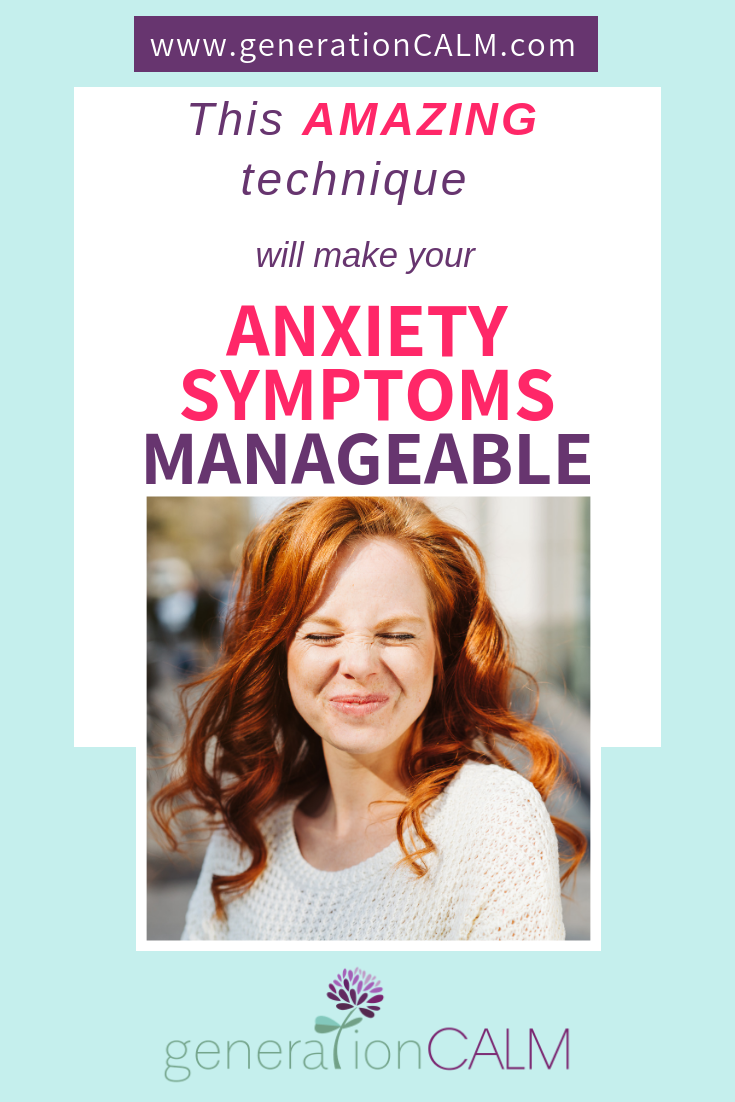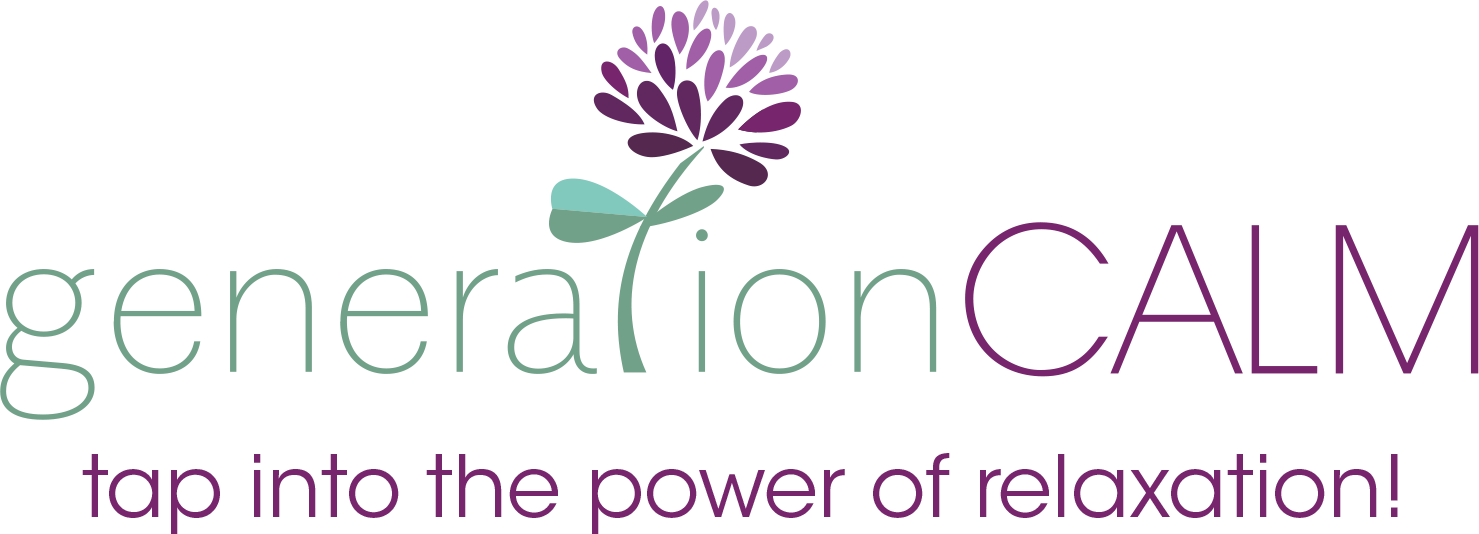Progressive Muscle Relaxation can reduce anxiety symptoms
Have you ever noticed all of a sudden that you have been unconsciously holding tension in a particular area of your body?
You might notice it in your shoulders, stomach or face muscles.
Muscle tension can be a symptom of anxiety. I can feel it right now as I’m typing, as a slight ache in my stomach. Almost like I’ve been working out and doing sit-ups (I definitely haven’t done any in a long time).
Now as I notice it, I can choose to consciously relax that tension, rearrange my sitting position and feel an easiness and let go of the tension in those muscles. I’m literally letting my belly hang out and it feels good.
This is how progressive muscle relaxation works.
Why you hold tension in your muscles
When you are feeling anxious about something your mind gets caught up in the worry but your body stores it in the muscles. (I talk more about this in regards to your face muscles, here).
In times of real threat, like in the caveman days, the danger of a sabre toothed tiger would register in a person’s mind. The body systems would then take over with hormones such as adrenaline surging into the body getting the muscles ready to spring into action.
to spring into action.
The tension would serve a purpose, much like a professional swimmer is poised to dive in the swimming pool at the Olympics final heat. Allowing the person to perform their best. At the end of the exercise, the muscle tension is released, the hormones have been discharged and all is good again.
This system is often known as the fight/flight response.
However, in these modern days our stressors never seem to leave us alone. The muscle tension can become chronic. The extra energy that charges into our muscles is never used up.
What is progressive muscle relaxation
Progressive muscle relaxation is a relaxation technique that can help you reduce your stress and anxiety. It involves tensing and relaxing large muscle groups in your body.
It’s often used as the first step in learning a stress relief technique. When I was working as a Clinical Psychologist with people who were clinically anxious this would be a good technique to start with.
As a child you were not taught how to relax and so you have to learn from the beginning again. Learning what the difference feels like in your muscles when they are tense compared to relaxed.
By first tensing the muscles you can suddenly start to see (or rather feel) where you might have been holding tension in the first place. And it can be very surprising!
So when you first of all learn how to tense a muscle you can then really notice the difference when you relaxed afterwards and it really is the the first step into stress relief and relaxation.
TV presenter, Carson Daly, talks about how he regularly uses Progressive Muscle Relaxation to help him with his anxiety.
Progressive Muscle Relaxation has been a huge help for my anxiety. I use an audio version- quick & very effective. There’s many. Here’s info: https://t.co/HEP6l8Oa41
— Carson Daly (@CarsonDaly) March 10, 2018
Benefits of progressive muscle relaxation
So let’s talk a bit more about the benefits for you and the reasons why you should be trying progressive muscle relaxation.
- First of all, it’s a great way of learning how to be aware of your body because it’s bringing attention to large muscle groups in your body and noticing the effects that you have there with the tension and then the relaxation.
- It will relax your tense muscles.
- Many people use it before sleep because it relaxes the body so much.
- It’s the precursor to a body scan meditation as it shows the difference between a tense muscle and a relaxed muscle. You may not always notice the difference until you really tense up your muscle beforehand.
- It’s good for those people who don’t like the quietness and stillness of meditation. Progressive muscle relaxation is more of an active technique. You’re actually doing something and moving your body.
- It’s also quite a mindful technique because you’re bringing attention to parts your body and really focusing on one muscle group at a time and that focuses your mind and brings your attention to one thing at a time.
- If you’ve ever heard of the mind-body connection you know that if you are feeling a certain way in your body then that will reflect in your mind so if you’re feeling tense in your body your mind will therefore feel tense. But if you can learn how to relax the muscle groups you also relax your mind. It’s similar to how smiling can help you feel happy.
- Progressive muscle relaxation is a no pill natural remedy for stress relief. There are no bad side effects unless of course you don’t like feeling relaxed.
- Regular practice of progressive muscular relaxation will really help to reduce your stress level.
- Unlike mindfulness, progressive muscle relaxation doesn’t have any kind of association with Buddhism. Some people might not, for religious reasons, want to do mindfulness because of its association with Buddhism and this progressive muscle relaxation has nothing to do with any religion whatsoever.
If you already have super-tight, tense muscles I encourage you talk to a physician about this first, just to check that everything’s okay and I probably wouldn’t tense so hard if you have tight muscles. Other than that, there really are no side effects to this relaxation technique.
Here is my progressive muscle relaxation video with audio that takes you step by step the way I would help a client so you can try this relaxation technique for yourself.
How to do progressive muscle relaxation
First allow yourself to settle in the chair with a straight but comfortable spine. (You’ll notice in the progressive muscle relaxation video tutorial I don’t have straight spine, and that’s because the chair I chose had a curved back).
Decide which end of your body you want to start with – top or bottom? It doesn’t matter.
- For the purposes of this example, let’s start with the head.
- Scrunch up your eyes, keep them tense. Then let them go – feeling relaxed.
- Move on to your forehead – furrow your brow – and now relax.
- Tense your jaw – now relax your jaw and let your lips part slightly.
- Scrunch up your shoulders – moving them up, around and back – and now relax your shoulders.
- Tense your triceps- holding your arms in front of your – and now relax your arms.
- Flex your biceps – holding them up – and now release them by your sides.
- Clench your fists – making them tight – now relax the tense and let the fingers gently unfold.
- Move to your upper back – hold it tense – and now relax.
- Tense your lower back – making it hollow – and release the tension.
- Clench your stomach – making it hard and tense – now let go completely.
- Clench your buttocks – hold it – and now relax.
- Tense up your thigh muscles- tight and tense – and now relax.
- Tighten your shins by pressing your heels on the ground with your toes putting up – and now relax.
- Tighten your calves by pushing down on your toes – and release the tension.
- Take a deep, slow breath for 5 counts, hold for 4, and release for 6 counts.
Done properly, it will take about 15 minutes in all.
How often should I do progressive muscle relaxation?
Progressive muscle relaxation is not something to do once and all your anxiety will go away. Consistency is key. Try it, and if you find it helpful, make it a part of your anxiety management plan. Just like you can’t expect to be a proficient piano player by practicing for 1 minute per week.
I suggest once a day if you’re having some serious anxiety issues. Around three times a week if it’s for preventative measures. You may find immediate relief. But in order to keep up the results you really need to practice it regularly.
Once you get used to doing progressive muscle relaxation, and you feel confident with the method, you can move on to the release-only version.
Release-only progressive muscle relaxation follows the same method, but you don’t need to tense the muscles first because you’re already aware of the difference between tense and relaxed muscles. So, you mentally scan your body from top to bottom and release each muscle one by one, paying close attention to those muscles which seem particularly tight.
Conclusion
Muscle tension and muscle pain are common symptoms of anxiety and stress, due to the body getting ready for flight or flight.
You can do something about this by using a trusted method called progressive muscle relaxation. It’s completely natural.
Follow the directions above or watch my video tutorial to try it out for yourself. With regular practice of this anxiety reduction technique you’ll be more in control of your anxiety symptoms.
Like this post?
Know what makes my muscles clench with anxiety?
Sharing my work.
Even though I know it’s fantastic and could help a lot of people, it makes me uncomfortable to toot my own horn.
So if you liked this post, please share it with others. Thank you so much!

